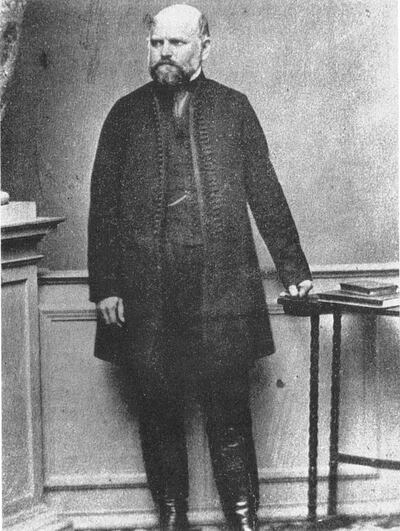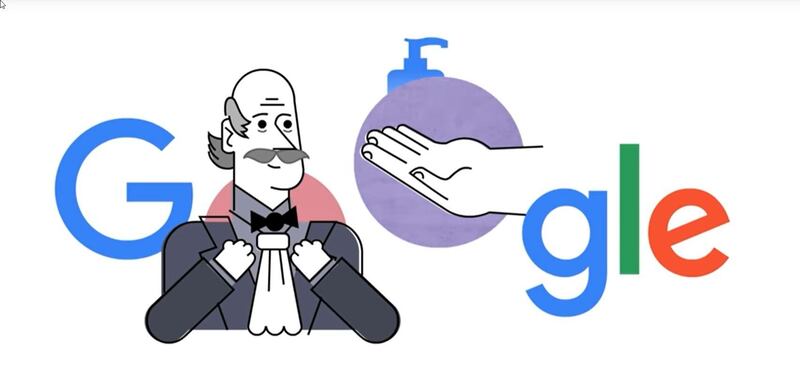We are constantly told that it is one of the most formidable lines of defence against Covid-19, second only to social distancing. But who was it that relayed the importance of clean hands to our health?
We have Ignaz Semmelweis - celebrated in a Google Doodle on Friday - to thank for that.
The Hungarian physicist and scientist, who was born in 1818, is recognised as one of the pioneers of antiseptic procedures. Dubbed as the "saviour of mothers", Semmelweis introduced hand disinfection standards as a way to drastically cut the incidence of the spread of Puerperal fever – also known as childbed fever – which was common in 19th century hospitals and was often fatal.
Semmelweis proposed the practice of washing hands with chlorinated lime solutions in 1847 while working in the obstetrical clinic at the Vienna General Hospital. In 1861, he published his findings in a book called Etiology, Concept and Prophylaxis of Childbed Fever.
Semmelweis’s proposal was rejected by the medical community at the time, despite a number of published results, which showed that hand washing decreased the mortality rate of Puerperal Fever to below one per cent. Doctors were offended by the suggestion that they should wash their hands and mocked Semmelweis for it.
The Hungarian physicist soon became severly depressed and absentminded. Excessively drinking, he was known for steering every conversation to the topic of Puerperal Fever. He lashed out against his critics in a series of bitter, angry letters, labelling them “irresponsible murderers” and “ignoramuses.”

Semmelweis was thought to have suffered a nervous breakdown in 1865. A colleague lured him, under the pretence of visiting one of Hera’s new institutes, to an asylum in Vienna. Semmelweis figured out what was really happening and tried to leave. He was severely beaten by several guards, secured in a straitjacket and confined to a dark cell. Semmelweis died 14 days later from a gangrenous wound caused by beatings from the asylum guards.
Semmelweis’s practice was accepted in the years following his death, after French biologist Louis Pasteur confirmed the germ theory, which states that pathogens can lead to disease, and Joseph Lister, a British surgeon, researched and operated using hygienic methods with great success.
Google celebrated Semmelweis on Friday, March 20, with a Doodle showing an animation of the Hungarian physicist holding up a stopwatch and guiding viewers through a six-step process of effective handwashing.
Semmelweis lived a tragic life, especially in his last years. But his research and his findings paved the way to more hygienic medical practices and procedures. Though he wasn’t celebrated in his lifetime, Semmelweis is now remembered as one of the pioneers of an idea that has become so common it is impossible to imagine a world without handwashing and disinfecting. There are now several hospitals and a university in Budapest named after Semmelweis. And the house where he was born is now a historical museum and library, honoring the life and work of the Hungarian physicist.








